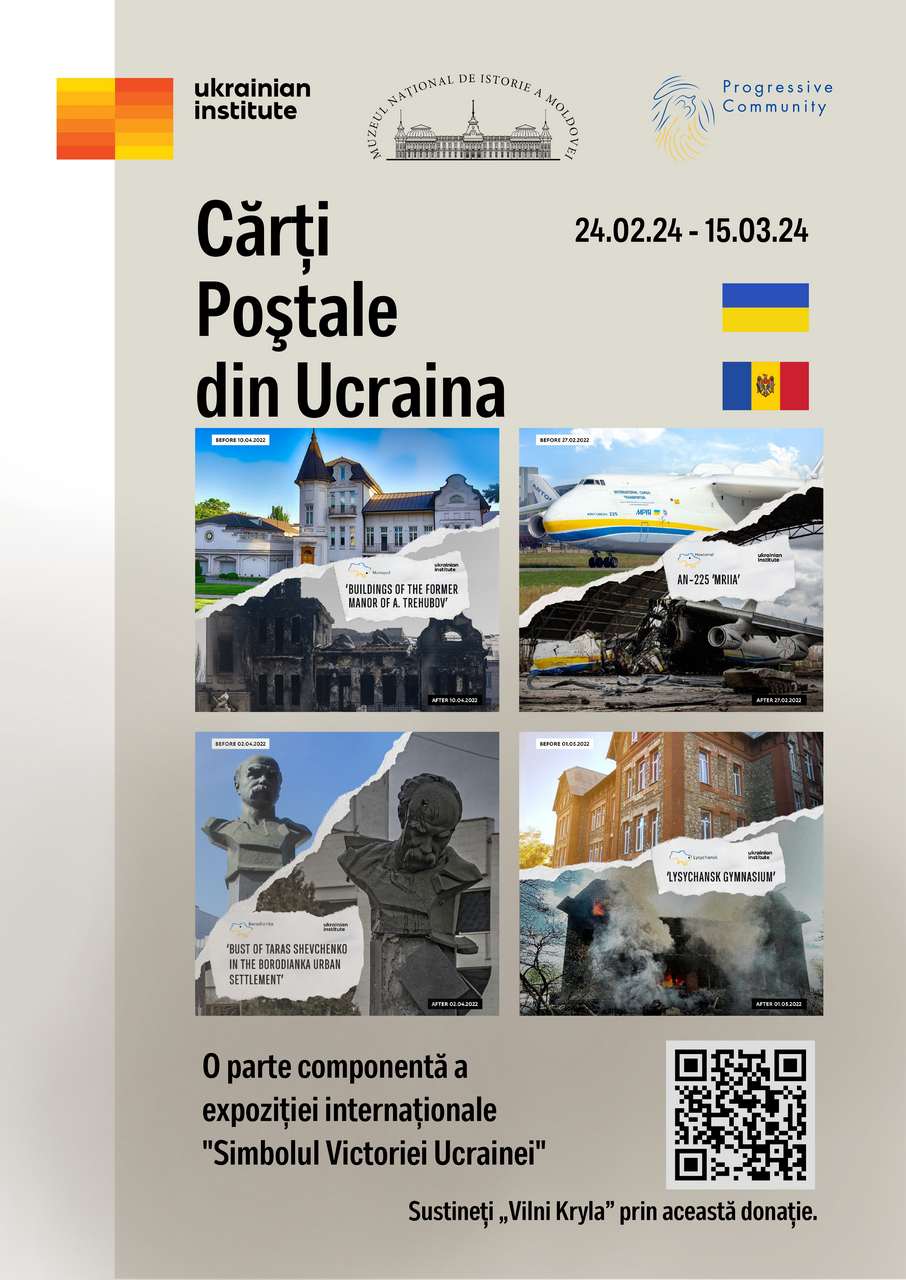 The exhibition "Postcards from Ukraine" is organized by the Public Association "Progressive community", in collaboration with the National Museum of History of Moldova and with the support of the National Library of the Republic of Moldova, dedicated to the commemoration of two years since the start of Russia's aggressive war against the sovereign state Ukraine.
The exhibition "Postcards from Ukraine" is organized by the Public Association "Progressive community", in collaboration with the National Museum of History of Moldova and with the support of the National Library of the Republic of Moldova, dedicated to the commemoration of two years since the start of Russia's aggressive war against the sovereign state Ukraine.
The exhibition includes 22 panels - postcards, each telling the history of an architectural monument located in different regions of Ukraine, before and after its destruction or damage. The works are part of the international exhibition "Symbol of Victory of Ukraine", a project that documents and presents the destruction caused by missile attacks and bombings on Ukrainian cultural heritage. Since the beginning of the Russian invasion of Ukraine, multiple historical, architectural and archaeological monuments of Ukraine are attacked and destroyed daily. Russian military forces cynically and ruthlessly target museums, monuments, universities, cinemas, launch missiles at churches, cathedrals, television towers and other edifices. The Russian army not only devastates Ukrainian cities and villages, but also systematically destroys Ukrainian cultural heritage.
Only together we become stronger and can support Ukraine in the struggle for peace and preservation of cultural heritage. We note that we cooperate with the voluntary organization OC FC "Vilni Kryla", an organization that provides humanitarian aid in hot areas. Together with "Vilni Kryla", a fundraising campaign was organized to support Ukrainian heroes. In this regard, we appeal to each of you to join the fundraising campaign by scanning the QR code. Everyone's contribution is very valuable to those who fight for the defense of Ukraine, for peace and stability.
By visiting this exhibition you have the opportunity to delve into the history and significance of these novel and unique monuments, as well as to feel the tragedy brought by the war.
The exhibition will be displayed in the upstairs hall of the National Museum of History of Moldova, from February 24 to March 15, 2024.
 31 August 1989 St., 121 A, MD 2012, Chisinau, Republic of Moldova
31 August 1989 St., 121 A, MD 2012, Chisinau, Republic of Moldova



















































